There are clothes. Then there is fashion. Sometimes, the two have little to do with each other.
Fashion Fictions, a new exhibit at the Vancouver Art Gallery, is on the furthest edge of the fashion universe. It’s out there on the skiff of territory between extreme imagining and practical use, between plain old clothing and haute couture: in other words, an interesting place for an art exhibition. The show encompasses both the wildest style impulses and how extraordinary, iconoclastic creations get filtered down into things you can buy at the mall. And vice versa.
The puffer jacket is an interesting example of how fashion moves in both directions, flipping the high and the low, up from the street and down from couturiers.
The ubiquitous puffer might have started out back in the day as a piece of mountaineering equipment designed to offer protection for backcountry trekkers, alpinists and other folks fond of outdoor adventures, but it has evolved into something else entirely.
Noted American outdoors enthusiast and businessperson Eddie Bauer was making puffers back in the 1940s. But American designer Norma Kamali’s infamous sleeping bag coat, created in 1973, kicked off the craze for the fashion set. Hip-hop heads, streetwear fanatics and cool kids adopted the idea, turning it into the coat that just wouldn’t stop. Now everyone and their dog has a couple of puffers kicking about the closet.
In the VAG exhibition, there is an entire room devoted to puffer jackets. Different sizes, shapes and iterations climb up the walls, billowing out in poofy, puffy silhouettes. In addition to puffers, there are shoes, dresses and bags: just about every possible variation of things you can put on your bod and stagger out the door.
Stagger, because some of these designs (I’m looking at you, designer Rick Owens) are massive.
The oversized idea in clothing has been going for quite some time. Big, bigger, biggest forms the entire ethos of the show itself. Fashion Fictions is lush, luxe, expansive, grand — throw a heap of superlatives into a heap and garnish with a spiff of adjectives.
Is too much?
Depends on your tolerance for embellishment and design run amok. But infamous fashion editor Diana Vreeland’s quote about “elegance is refusal” has no place here.
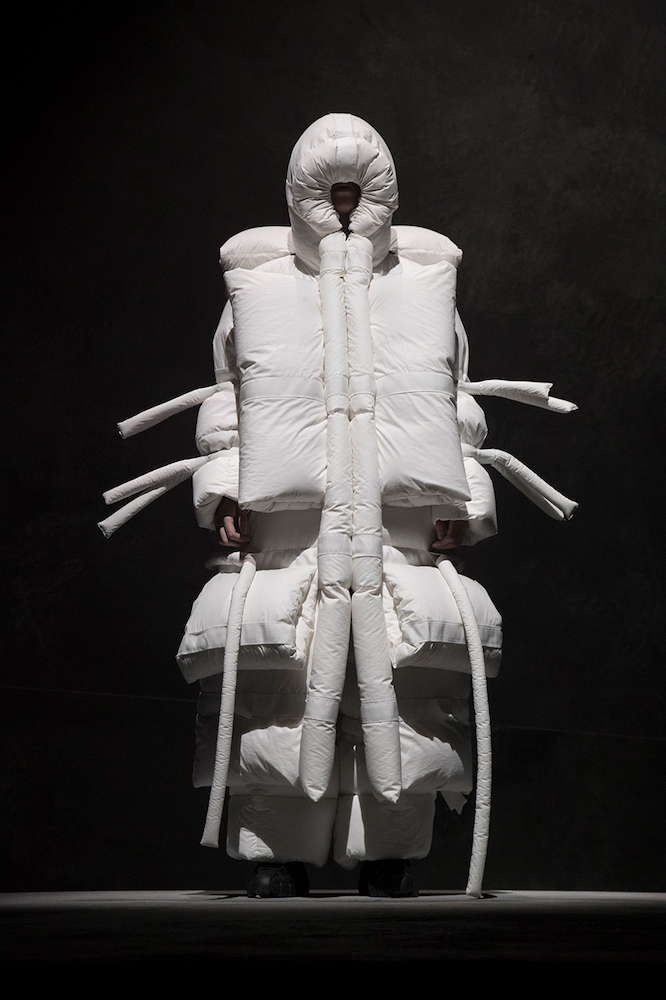
In addition to the clothing and accessories on display, there is a lab/atelier presented in partnership with Emily Carr University Art + Design’s Material Matters. The fixings and implements of fashion-in-the-making were piled about the space, waiting for nimble fingers and clever minds to set to work.
But Material Matters has bigger ideas than mere articles of attire, posing the question: “Can textiles, products, the clothing that we design offer a plurality (many diverse kinds!) of circumstances and deeply inter-relational material world views?”
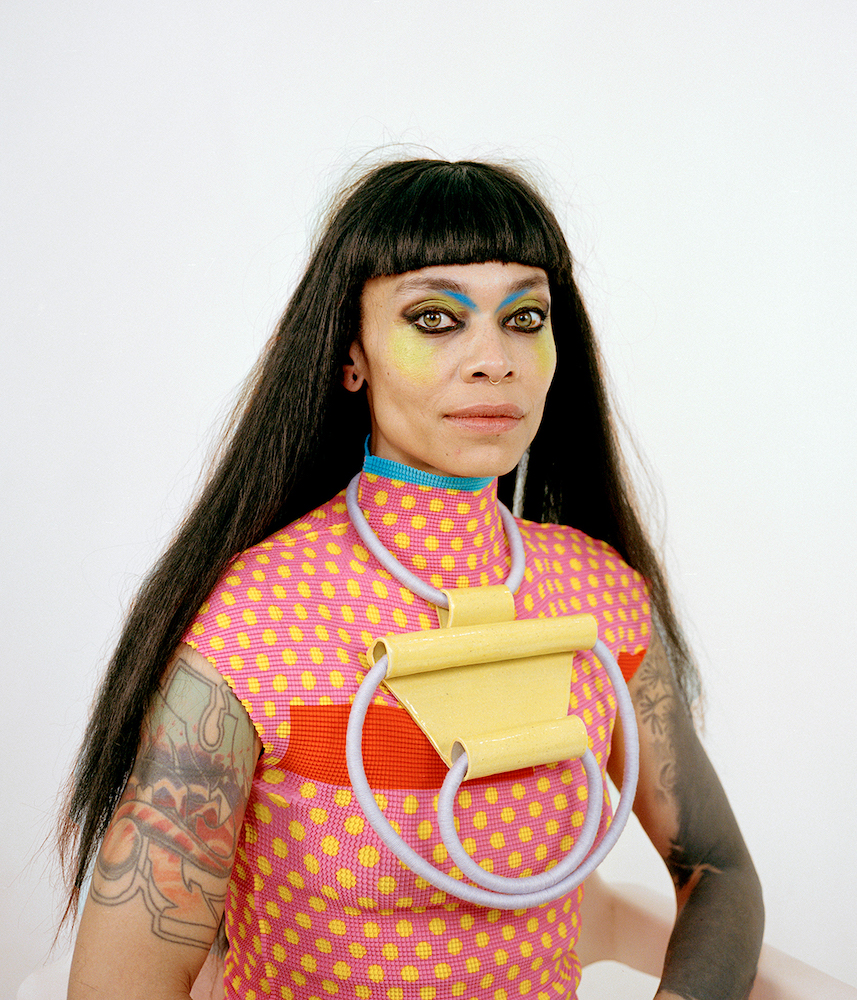
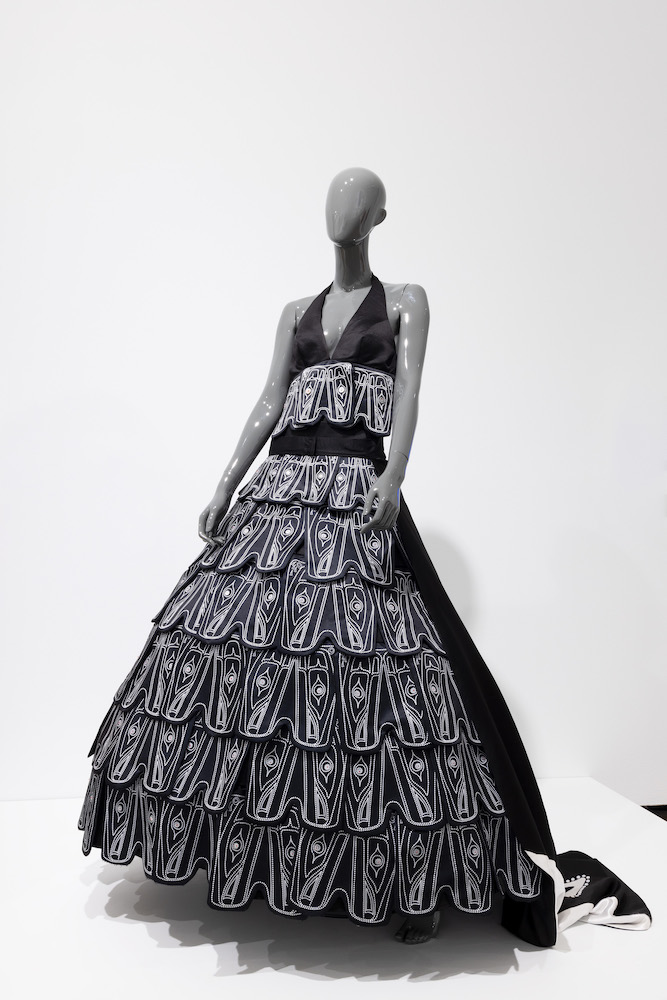
Whether it’s a huge puffer jacket or a spikey suit, certain words like safety, security and survival pop up throughout the show, indicating some interesting developments in the world of design. Fashion is, after all, bound to the body, to human physicality and lived, daily stuff. What do we need to get through the day, to feel protected, comfortable and arguably ourselves?
Many of us immediately understand the feeling of putting on a well-designed piece of clothing and feeling somehow better prepared to face the world. What world will you be facing is the bigger question hanging in the air.
In this aspect, fashions of the future might bear more of a resemblance to the scrounged and scavenged ensembles in Mad Max than the sleek onesies of Star Trek. But of course, things are still very much in flux. But dress for the future you would like to have happen, perhaps?
Some of the more innovative offerings look to fashion as a means to not only embody the future, but usher it into being. The thematic conceit of “experimental design practices” incorporates unusual materials as well as innovative ways of putting them together.
Whether it’s the late great Alexander McQueen or Dutch designer Iris van Herpen, in whose work the influences of McQueen are readily apparent, fashion minds have an ability to conjure articles of clothing that make the future happen now.
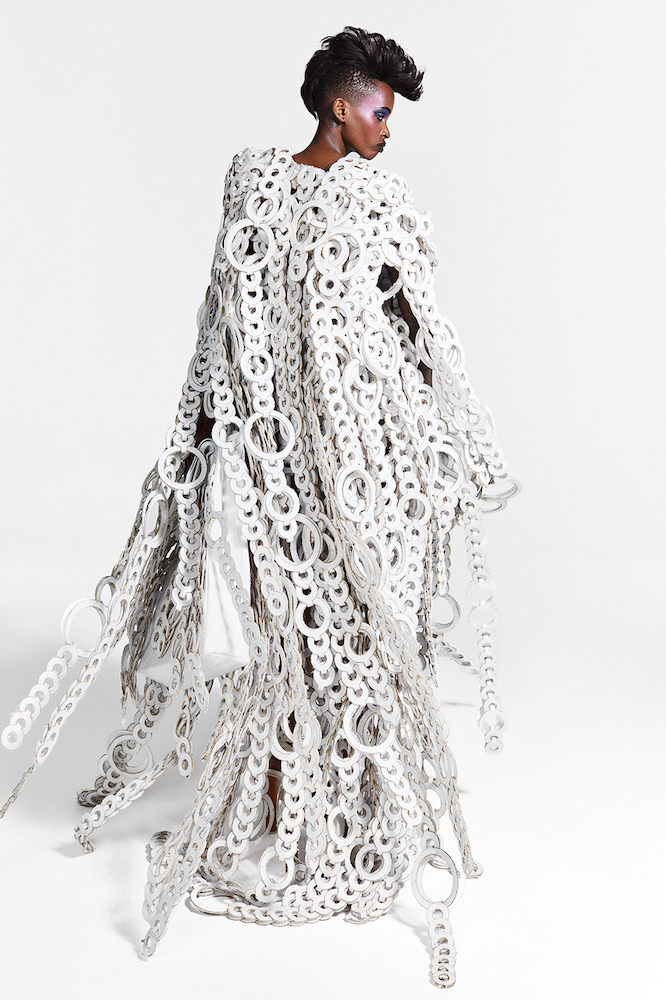
Earlier examples such as designers Paco Rabanne and André Courrèges, who were making space-age clothing in the 1960s, are duly included. But the show takes its title from more current theory.
Artist and technologist Julian Bleecker, whose explorations of the intersections between the current moment and the potential future were outlined in talk that he gave at AIGA’s 2022 National Design Conference, provides some structural underpinning for Fashion Fictions.
In his speech, Bleeker described the experience of seeing the design specs for a Star Trek communicator, as well as other examples of clothing and equipment from the universe of the future created by engineer and draftsman named Franz Joseph Schnaubelt. After his day job was done, Schnaubelt would go home and design the technical specs, colour schemes and typefaces for the Starship Enterprise for fun. The level of detail went down to the types of screws and batteries necessary for the proper functioning of the equipment.
The result of all this careful attention to detail became the Star Trek Star Fleet Technical Manual. Released in 1975, the book made its way to the New York Times bestseller list, just as TV executives were thinking about cancelling the series. It has been subsequently rereleased in different editions ever since.
Bleeker’s take on this story is that the concepts of archeology, normally related to material objects from history, can also be used to potentially understand the future. The leap between fictional Star Trek communicator and the current iPhone isn’t really that big a jump. Here again, Bleeker’s thesis rings true: If you can imagine it, you can create it.
So, what does this have to do with fashion? Only that fashion is deeply engaged with looking ahead, as a means to incite consumer desire for the next hot item, but also, arguably, in service of a more deep-seated, foundational need. How to navigate the current world, as well as the one to come.
In addressing this, the show is divided into multiple sections: Material Futures, Aesthetic Prophesies and Responsible Visions. Each individually features different manifestations of forward thinking in materials, creatives envisioning and canny ways to repurpose existing stuff into something entirely new.
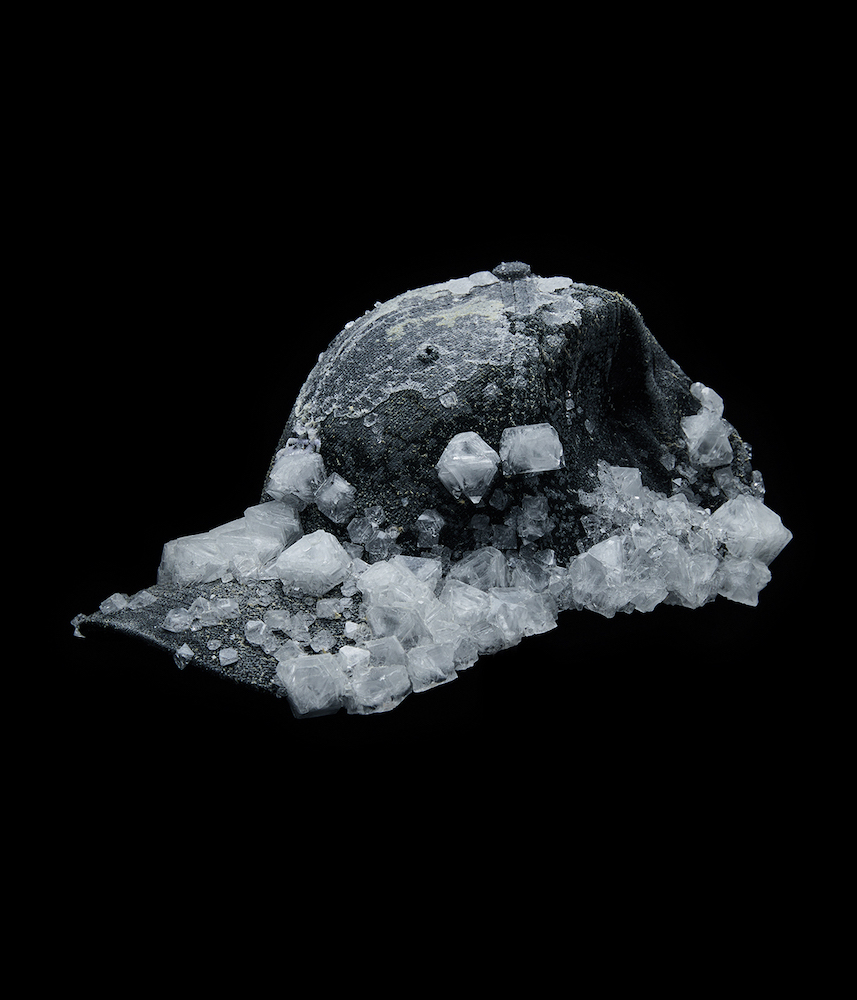
Shoes made of ocean plastic are old news. How about shoes made by 3D printing?
Yeah, I guess that’s cool, but what else you got?
Maybe shoes made from bacteria?
Now you’re talking!
Some of the most fascinating designs included in the exhibition are the least showy. Sure, there’s plenty of star turns, such as Maiko Takeda’s headdresses that combine insectile, feathered antennae that Icelandic wonderment Bjork wore in her 2013 tour.
The bacteria shoes are another example of when the prosaic meets the profoundly unexpected. The shoes themselves are modest, low-rise trainers with an outsized wedge of heel. They probably wouldn’t attract much attention. But some sharp-eyed hipster kid would probably take note, mutter “cool” under their breath and bring forth a new style phenom.
On the day of my VAG visit, the gallery was thronged with teenagers and younger kids, citizens of unknown futures to come. It’s these folks with their kooky getups who will need clothing and accessories to contend with an increasingly unstable environment.
To this end, the show cites author and theorist Bruce Sterling, whose work in the cyberpunk realm is often compared to that of William Gibson. (An aside, Gibson also is something of a fashion maven.)
In addition to his speculative fiction, Sterling occasionally writes about the future of fashion. In 2006, he made the argument in Artforum magazine that fashion was already wrestling with the coming shifts, including climate change.
“Fashion can’t go away in a climate calamity. Fashion will mutate and, in many ways, thrive, because it will matter so much more. When New Orleans high-maintenance girls dress up to party nowadays, they are really dressing up to party. They’re no longer doing that out of daffy rich-chick whimsy, they’re doing it for the same grim and vital reason that women in the London Blitz used to draw lines up the backs of their legs so as to mimic nylons. There’s less pelf in it, but more heart.”
Pelf… what a curious word. But it summons up something that bothered me about the show.
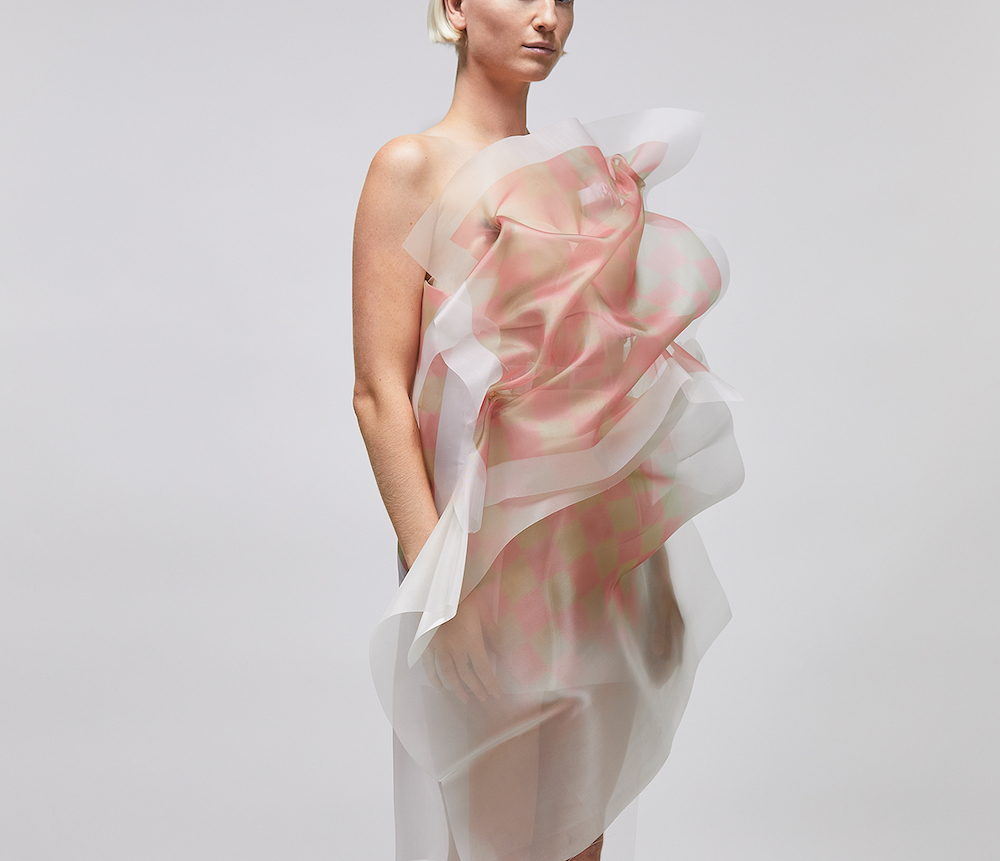
As a long-time fashion fanatic, I was expecting to be blown away by Fashion Fictions. To a certain extent, I was. Many individual sections are fascinating enough, and the shoe designs alone are sufficient for a couple different shows.
But the range and number of items featured doesn’t add up to a greater whole. Maybe it’s that there is so much on offer that it takes a while to dig down into the more complex ideas. But because fashion is already so domineering, a marketing global juggernaut of images and objects, seeing a pair of Balenciaga trainers in an art gallery feels a little unexciting.
More interesting is the impulse, still inchoate, floating about the neural network of some style-obsessed teenager who has yet to put pen to paper (or whatever program is currently in use), and create fashions yet unimagined. Maybe it will be made of squid ink, cast-off packaging and mushrooms. ![]()
Read more: Art, Media, Science + Tech




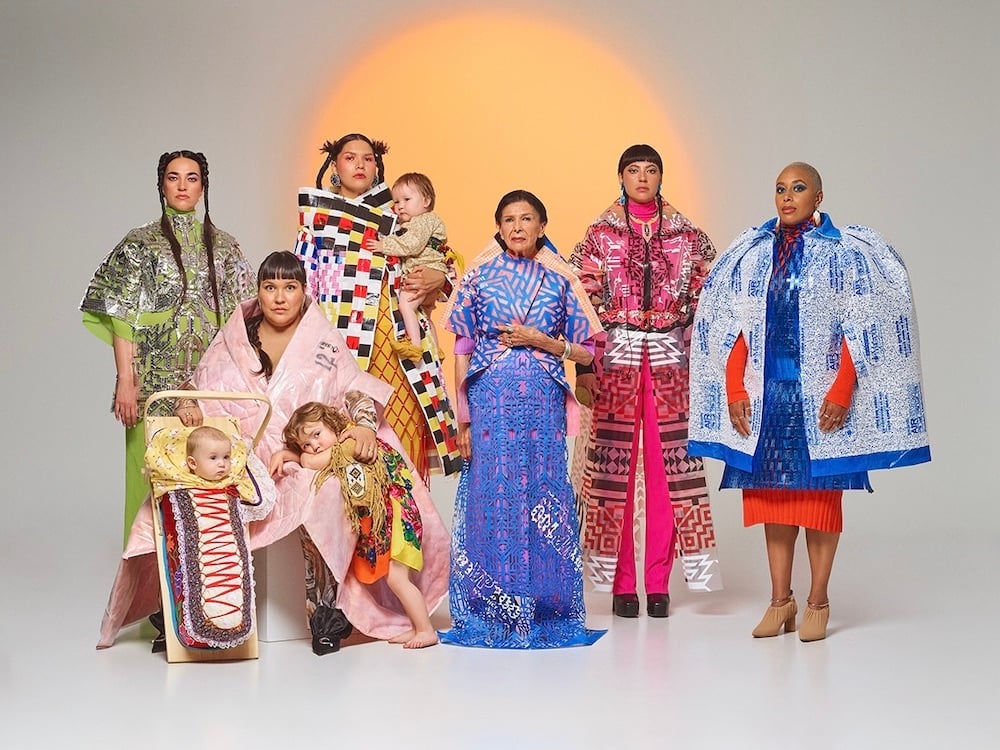












Tyee Commenting Guidelines
Comments that violate guidelines risk being deleted, and violations may result in a temporary or permanent user ban. Maintain the spirit of good conversation to stay in the discussion and be patient with moderators. Comments are reviewed regularly but not in real time.
Do:
Do not: